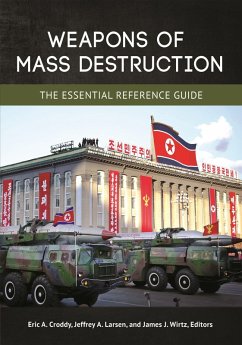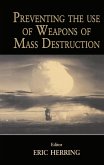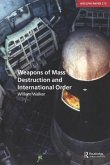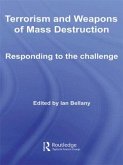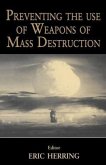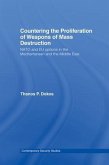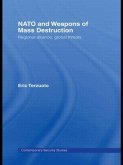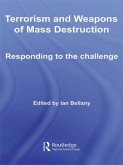Preface,
Introductory Essays
Chemical and Biological Warfare as Weapons of Mass Destruction: A U.S.
Perspective,
Nuclear Weapons,
REFERENCE ENTRIES
Abrin,
Accidental Nuclear War,
Agroterrorism (Agricultural Biological Warfare),
Airborne Alert,
Al Qaeda,
Ammonium Nitrate Fuel Oil,
Anthrax,
Anti-Ballistic Missile Treaty,
Antinuclear Movement,
Anti-Satellite Weapons,
Arms Control,
Aum Shinrikyo,
Australia Group,
Baruch Plan,
Bikini Island,
Binary Chemical Munitions,
Biological and Toxin Weapons Convention,
Bioregulators,
Blood Agents,
Botulism (Botulinum Toxin),
Brinkmanship,
Broken Arrow,
Brucellosis (Brucella Bacterium),
Chemical Weapons Convention,
Chernobyl,
China, People's Republic of,
Chlorine Gas,
Comprehensive Test Ban Treaty,
Cooperative Threat Reduction Program (Nunn-Lugar Program),
Crisis Stability,
Criticality and Critical Mass,
De-alerting,
Declared Facility,
Depleted Uranium (U-238),
Deterrence,
Deterrence and Defense Posture Review,
Deuterium,
Enrichment,
Extended Deterrence,
Fallout,
Fentanyl,
Fissile Material Cutoff Treaty,
France,
Fusion,
Gun-Type Devices,
Halabja Incident,
Half-Life,
Hemorrhagic Fever Viruses,
Highly Enriched Uranium,
Hiroshima,
Hydrogen Bomb,
Implosion Devices,
India,
Intermediate-Range Nuclear Forces Treaty,
International Atomic Energy Agency,
Iran,
Iraq,
Islamic State,
Isotopes,
Israel,
Joint Comprehensive Plan of Action,
Kaffa, Siege of,
Kiloton,
Libya,
Limited Test Ban Treaty,
Lithium,
Low Enriched Uranium,
Manhattan Project,
Megaton,
Missile Defense,
Missile Technology Control Regime,
Mustard (Sulfur and Nitrogen),
Mutual Assured Destruction,
Nagasaki,
Napalm,
Nerve Agents,
Neutron Bomb (Enhanced Radiation Weapon),
New START Treaty,
North Korea,
Nuclear Fuel Cycle,
Nuclear Nonproliferation Treaty,
Nuclear Posture Review,
Nuclear Taboo,
Nuclear Weapons Ban Treaty,
Nuclear-Weapons-Free Zone,
Nuclear Winter,
Pakistan,
Phosphorus,
Pit,
Plague,
Plutonium,
Prague Agenda,
Primary Stage,
Psychoincapacitants,
Q Fever,
Radiation,
Radiological Dispersal Device,
Reprocessing,
Ricin,
Russian Chemical and Biological Weapons,
Russian Nuclear Forces and Doctrine,
Smallpox,
South Africa,
Staphylococcal Enterotoxin B,
Stockpile Stewardship Program,
Strategic Arms Limitation Talks (SALT I and SALT II),
Strategic Arms Reduction Treaty (START I),
Strategic Arms Reduction Treaty (START II),
Strategic Offensive Reductions Treaty,
Syria,
Tactical Nuclear Weapons,
Triad,
Tritium,
Tularemia,
United Kingdom,
Uranium,
U.S. Chemical and Biological Weapons Programs,
U.S. Nuclear Forces and Doctrine,
V-Agents,
Wassenaar Arrangement,
Weapons of Mass Destruction,
Weapons-Grade Material,
Yellow Rain,
Yield,
PRIMARY DOCUMENTS
Chemical and Biological Weapons,
Biological and Toxin Weapons Convention (1972),
Chemical Weapons Convention (1993),
Australia Group,
List of Plant Pathogens for Export Control (2012),
Control List of Dual-Use Biological Equipment and Related Technology and
Software (2017),
Control List of Dual-Use Chemical Manufacturing Facilities and Equipment
and Related Technology and Software (2017),
Export Control List: Chemical Weapons Precursors (2017),
List of Human and Animal Pathogens and Toxins for Export Control (2017),
Nuclear Weapons,
Atomic Energy Act (1946),
North Atlantic Treaty (1949),
Statute of the International Atomic Energy Agency (1956),
Hot Line Agreement Summary (1963),
Treaty of Tlatelolco (1967),
Treaty on the Non-Proliferation of Nuclear Weapons (1968),
Nuclear War Risk Reduction Measures Agreement (1971),
Seabed Treaty (1972),
Anti-Ballistic Missile Treaty (1972),
Interim Agreement on Strategic Offensive Arms (SALT I) (1972),
Prevention of Nuclear War Agreement (1973),
Threshold Test Ban Treaty (1974),
Peaceful Nuclear Explosions Treaty (1976),
Harmel Report and NATO Dual-Track Decision (1979),
Convention on the Physical Protection of Nuclear Material (1980),
Nuclear Risk Reduction Centers Agreement (1987),
Ballistic Missile Launch Notification Agreement (1988),
Strategic Arms Reduction Treaty (START I) (1991),
Joint Declaration on the Denuclearization of the Korean Peninsula (1992),
Treaty on Open Skies (1992),
Strategic Arms Reduction Treaty (START II) (1993),
Missile Technology Control Regime, U.S. Guidelines (1993),
The Wassenaar Agreement on Export Controls for Conventional Arms and
Dual-Use Goods and Technologies (1995),
Strategic Offensive Reductions Treaty (2002),
G8 Global Partnership Against the Spread of Weapons and Materials of Mass
Destruction (2002),
National Strategy to Combat Weapons of Mass Destruction (2002),
New START Treaty (2010),
NATO Deterrence and Defence Posture Review (2012),
Joint Comprehensive Plan of Action (2015),
Treaty on the Prohibition of Nuclear Weapons (2017),
Chronology of Chemical and Biological Weapons,
Chronology of Nuclear Weapons,
Bibliography,
Contributors,
Index
About the Editors,

